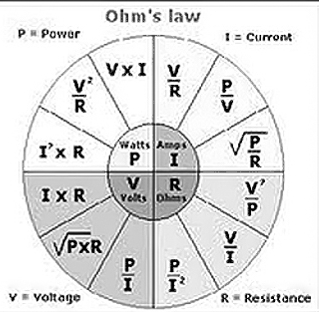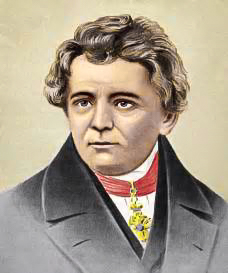 Georg Simon Ohm
Georg Simon Ohm 
 Georg Simon Ohm
Georg Simon Ohm 
Georg Simon Ohm (16 March 1789 ➙ 6 July 1854) was a German physicist and mathematician. As a school teacher, Ohm began his research with the new electrochemical cell, invented by Italian scientist Alessandro Volta. Using equipment of his own creation, Ohm found that there is a direct proportionality between the potential difference (voltage) applied across a conductor and the resultant electric current. This relationship is known as Ohm's law.
Ohm's law first appeared in the famous book Die galvanische Kette, mathematisch bearbeitet (The Galvanic Circuit Investigated Mathematically) 1827 in which he gave his complete theory of electricity. In this work, he stated his law for electromotive force acting between the extremities of any part of a circuit is the product of the strength of the current, and the resistance of that part of the circuit.
The book begins with the mathematical background necessary for an understanding of the rest of the work. While his work greatly influenced the theory and applications of current electricity, it was coldly received at that time. It is interesting that Ohm presents his theory as one of contiguous action, a theory which opposed the concept of action at a distance. Ohm believed that the communication of electricity occurred between "contiguous particles" which is the term he himself used. The paper is concerned with this idea, and in particular with illustrating the differences in this scientific approach of Ohm's and the approaches of Joseph Fourier and Claude-Louis Navier.
The work of Ohm marked the early beginning of the subject of circuit theory, although this did not become an important field until the end of the century.
![]() Excerpts From Wikipedia opens in new browser window
Excerpts From Wikipedia opens in new browser window


![]() Return to Radio Pictures
Return to Radio Pictures
![]() Return to MCRN Home
Return to MCRN Home